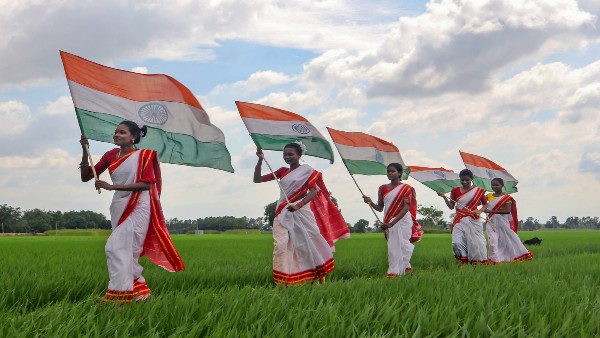The tricolor, sometimes referred to as the Indian flag, represents the country’s people’s tenacity, pride, and solidarity. Its history and design are intricately entwined with the nation’s fight for independence and rich cultural heritage. In this blog article, we’ll dig into the fascinating background of the Indian flag, exploring its genesis, development, and profound national importance.
The Evolution of the Indian Flag: A Timeline
Pre-Independence Flags

Several flags were used to symbolize India’s different ethnicities and movements before the tricolor rose to popularity. These included the flags flown during the Indian National Congress and the Sepoy Mutiny in 1857, each of which captured the essence of their time.
Birth of the Tricolor
Pingali Venkayya created the distinctive tricolor flag that is still flown today, and it was first displayed in 1921 during a meeting of the All India Congress Committee. The Ashoka Chakra (wheel) at the middle represents the endless cycle of life and righteousness, while its saffron, white, and green bands stand in for courage, truth, peace, and prosperity, respectively.

Indian flag Act of 1947
The Indian Flag Act of 1947 codified the flag’s design and proper hoisting procedure as India neared independence. The significance of the flag as a uniting symbol for the newly independent country was also underlined by this Act.
Post-Independence Evolution
The size and quantity of Ashoka Chakra spokes were two minor design modifications made to the flag over time. These modifications seek to keep the flag’s primary meaning while improving its visual appeal.
The Significance of the Indian Flag
The importance of the Indian flag extends well beyond its aesthetic value. It is a symbol of unity in diversity and the hardships and sacrifices of innumerable people who battled for India’s freedom. The saffron hue indicates bravery and selflessness, the white stripe stands for honesty and purity, and the green stripe denotes progress and good fortune. The Ashoka Chakra serves as a symbol of India’s historical achievements and dedication to righteousness and justice.
Flag Hoisting Protocol and National Holidays
On occasions like Independence Day and Republic Day, a specific process is followed before displaying the Indian flag. Understanding this etiquette can help one appreciate the value of the flag and the reverence it inspires.
Celebrating National Pride
The Indian flag is a reflection of the Indian identity, instead of just a sign on a pole. It unites individuals from many backgrounds behind a single symbol and is fervently shown at festivals, celebrations, and sporting events. The tricolor symbolizes the nation’s accomplishments and goals and acts as a source of inspiration.
Conclusion
The Indian flag is more than simply a piece of fabric; it is a symbol of India’s liberation struggle, its illustrious past, and its promising future. Our connection to the country and its principles is strengthened when we are aware of the tricolor’s history and importance. On national holidays, let us raise the Indian flag in remembrance of the sacrifices made by those who came before us and renew our commitment to maintaining the ideals of harmony, diversity, and development that it stands for.
